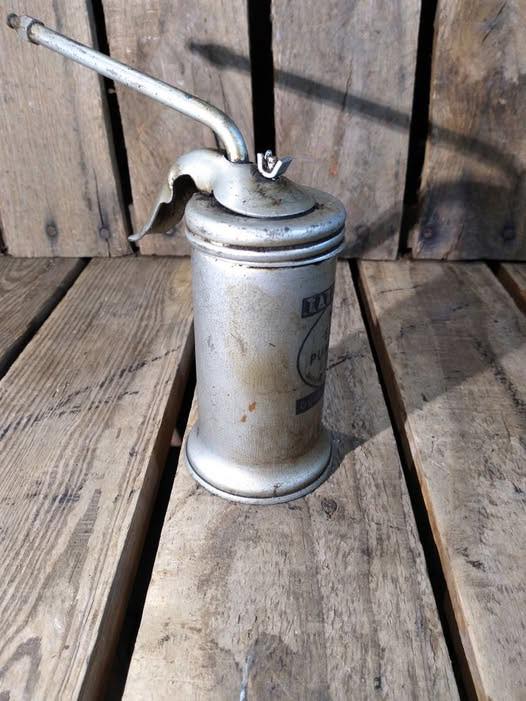That Little Metal Can You Probably Ignored — And Why It Mattered More Than You Knew
Ever wandered into your dad’s garage or your grandpa’s shed and noticed a strange little metal can with a skinny spout and a squeeze trigger? You might have thought it was a weird old thermos or some forgotten kitchen gadget. But if you grew up in the ‘70s or ‘80s, that object wasn’t just background clutter—it had a real purpose.
That peculiar piece of metal was a hand-squeezed oil can. It wasn’t there for decoration. It was there to work. And it worked hard. Before spray lubricants like WD-40 became household staples, these little cans were the go-to solution for anything that creaked, squeaked, or refused to move.
Whether it was a rusty chain on your banana-seat bike, a squeaky screen door, or a stiff lawnmower throttle, that hand-oiler got the job done. No bells, no whistles — just a satisfying hiss of oil hitting its target, like a tiny victory drumroll every time.
What Made These Cans So Special?
Rugged Metal Body
Most were made from steel or aluminum. They could take a drop, a knock, or a fall off the workbench and keep going.
Cleverly Curved Spout
The long, skinny nozzle often bent just enough to reach inside engines, behind hinges, or deep into a drill press.
Trigger That Gave You Control
The squeeze handle wasn’t just decorative. It let you deliver oil precisely — one squirt at a time. No mess. No waste. Just accuracy and efficiency.
In a world of disposable plastic gadgets, this tool was built to last. It was made for people who fixed things with their hands and took pride in it.
Where You’d Spot One
These oil cans were everywhere:
On a dusty shelf in the garage, half-buried under rags and bolts.
Hanging beside an old handsaw.
Riding in the back of a station wagon “just in case.”
Even under the sink for emergency hinge duty.
You didn’t talk about them. You just used them. And when you needed one, you were grateful it was there.
Why They Disappeared
By the late ‘80s, aerosol spray lubricants had taken over. Fast, easy, and no cleanup — the old-school oil can quietly stepped aside. Many were tossed, boxed up, or left to rust in forgotten toolboxes. With them went a small piece of everyday craftsmanship.
Why They Still Matter
Modern sprays are convenient, but they don’t offer the same control. With a hand-squeezed oil can, you decide exactly how much oil goes where. No overspray, no propellants. Just precise, hands-on maintenance.
These cans also symbolize a fading philosophy: maintain it, don’t toss it. Repair it, don’t replace it. They remind us of a time when people cared for their tools, machines, and lives.
Still Useful Today
Hobbyists, tinkerers, mechanics, and vintage restoration enthusiasts swear by them. From squeaky antique cabinets to old sewing machines, a vintage oil can might be the perfect solution.
Collectors treasure them, too. Each scratch, dent, and spot of rust tells a story — a history of hands-on care and self-reliance.
Conclusion
That little metal can wasn’t just garage clutter. It symbolized practicality, ingenuity, and doing things with your own hands. It didn’t need batteries. It didn’t break after a year. It just worked, one well-aimed squirt at a time.
In a world of fast fixes and disposable gadgets, maybe it’s time to bring a bit of that old-school wisdom back. So if you spot one at a flea market or buried in a toolbox, don’t pass it by. Pick it up. Give it a squeeze. You might just bring something back to life — literally and metaphorically.
